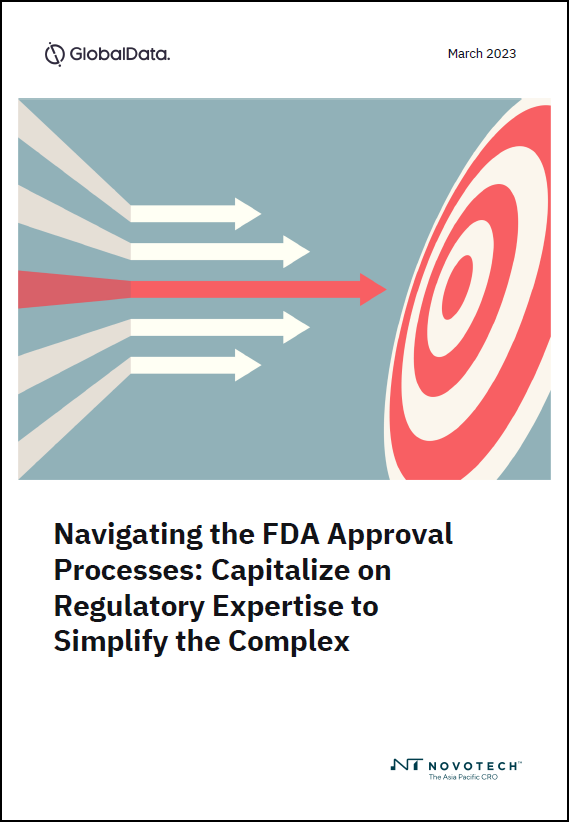
The priority review programmes were introduced to incentivise innovation in an area typically with low commercial value.
Priority review vouchers (PRVs), which slash FDA review time of a drug application from the usual 10 months to six months, are given to companies willing to spend time and money developing a drug for neglected tropical diseases, rare pediatric diseases, and material threat medical countermeasures.

US Tariffs are shifting - will you react or anticipate?
Don’t let policy changes catch you off guard. Stay proactive with real-time data and expert analysis.
By GlobalDataThough critics have highlighted issues, the vouchers provide an important regulatory framework to encourage small biotech R&D activity in the qualifying disease areas.
Recently, the French biotech Valneva received a voucher upon FDA approval of Ixchiq – the world’s first chikungunya vaccine. It was a high-profile voucher win, because Valneva can now use it on a plethora of drugs in its pipeline. Alternatively, it can keep it as a financial asset or sell it on to another pharma company.
The trade-off for companies investing in low-performing sectors comes from the voucher itself – both in its monetary value for sale and the potential for bigger pharma companies to use it to bring a blockbuster drug to market four months quicker than usual. In the years since its inception, this market has experienced dynamism where vouchers are bought and sold for fees usually commanding nine-figure sums.
Market fluctuations with voucher values
The first ever priority review voucher sold to a pharmaceutical company was by BioMarin to Regeneron Pharmaceuticals for $67.5 million. Regeneron then used the voucher on Praluent (alirocumab) to beat Amgen’s Repatha (evolocumab) by a month to market the first PCSK9 inhibitor. The gamble to have first-to-market bragging rights did not pay off however, with Repatha having $25m more sales globally that Praluent in 2016. By 2022, the gap was nearly $1 billion.
The inflection for priority review voucher sales occurred in 2015, when they were scarce. That was the year AbbVie bought a priority review voucher from United Therapeutics for $350 million – to date the highest free commanded for a voucher. AbbVie has not disclosed when it used it, though Endpoints News reported the voucher was used for the approval of Rinvoq (upadacitinib) in 2019.
GlobalData analysed 19 deals where the buyer of vouchers was made public, and where vouchers were sold solely as assets – as opposed to being grouped within an acquisition, merger, or license deal. Since 2015, the secondary market for priority review vouchers has stabilised and these now go for an average amount of $100 million.
GlobalData is the parent company of Pharmaceutical Technology.
According to the US-based law firm Venable LLP, between 5 –10 vouchers have been sold each year since the market spike in 2015. Though this is objectively down from the heights of 2015, Jeremiah Kelly, who previously worked as chief of the FDA regulatory law division in the US Army and currently partner at Venable LLP, says it is about the context.
“[Small biotechs] have a different perspective than a lot of outside observers. The height of the market was obviously $350m for a voucher. But for many companies, $90-100m is still an incredibly large incentive.”
Future unclear for high-value deals
Kelly says the current risk-adverse financial climate that is dominating many sectors could see vouchers going for lower fees in the future. The lack of venture capital and increasing saturation of vouchers could further lead to a depression in market value, he adds.
“I think some of the smaller companies could become more desperate for the funds. If venture capital doesn’t rebound, we’ll see a depressed value.”
The minimum value of vouchers is based on the fact they are competitive assets, so Kelly says that they may not be sold for extremely low value. Companies can still competitively price their vouchers based on sales occurring on the market.
This past year saw one of the lowest sales on record, when Novartis bought a voucher from Pharming for just $21.1 million in June. Though, crucially, the voucher was wrapped into a larger deal. The lower price point was because the sale was agreed as part of a pre-existing license back in 2019.
Seemingly pointing to the Novartis deal without naming it, professor David Ridley, health economist at Duke University's Fuqua School of Business, and who helped introduce the programme to Congress, explains, says “A voucher price that rattled the industry was a deal where a company provided some funding upfront and included an option to buy a voucher at a low price later that was not at market price.”
“Vouchers have been stable at about $100m for years. But in some cases, companies need to sell it right away because they need the liquidity. When a company is in desperate straits, the value can be lower,” he explains.
A PRV business model
Bluebird bio has made a name for itself in the PRV secondary market, after agreeing to sell all three of its recently acquired vouchers. This included one sold for $102 million in December 2022, and one for $95 million in January 2023. Bluebird then agreed to sell a third PRV for $103 million in October 2023 upon approval of its sickle cell gene therapy Lyfgenia (lovo-cel).
But approval of a drug does not guarantee a voucher, as bluebird bio found out. Lyfgenia was expectedly approved in December, but the FDA decided not hand out a voucher. In the approval letter, the agency explained its decision by saying Lyfgenia’s active ingredient was already being used in bluebird’s other gene therapy Zynteglo (betibeglogene autotemcel). Zynteglo’s approval bore a priority review voucher in 2022.
Bluebird did not respond to a request for comment.
Even though only two of the deals materialised, deciding to sell three vouchers in the space of a year is not common. Kelly says that business models that target the programmes is becoming more frequent.
“Companies are targeting assets from smaller biotechs that are designed against ‘voucherable’ targets and including them in the portfolio. This isn’t new, but we’re seeing it happen more. Those who are thinking along these lines are being very innovative.”
“By obtaining a voucher and then taking the proceeds [from a sale] to invest in new adaptable technologies, you can create a self-sustaining R&D pipeline.”
The use of priority review vouchers in big pharma is in stark contrast to emerging companies, as Ridley explains: “Big companies generally will not sell their vouchers because then that would be subject to taxes. And it might also signal that it doesn't have much in its pipeline.
“So big companies will often sit on a voucher for many years and wait to use it on a blockbuster drug.”
A recent example was Regeneron Pharmaceuticals using a voucher in its application for its blockbuster drug Eylea (aflibercept) in February 2023, for the treatment of wet age-related macular degeneration (AMD) and diabetic macular edema. The therapy was approved four months ahead of schedule in August 2023, opening it up to a global AMD market predicted to be worth $30 billion by 2031, according to GlobalData’s Pharma Intelligence Centre.
Despite stabilising, the market for these vouchers may yet react to the continued risk-adverse climate into 2024. As ever, however, the market and indeed the PRV programmes are at the mercy of political decisions, such as the shifts in the US drug pricing landscape. Whether voucher pricing rides these out remains to be seen. The robustness of the market will perhaps be a reflection of the programmes' long-term appeal.




